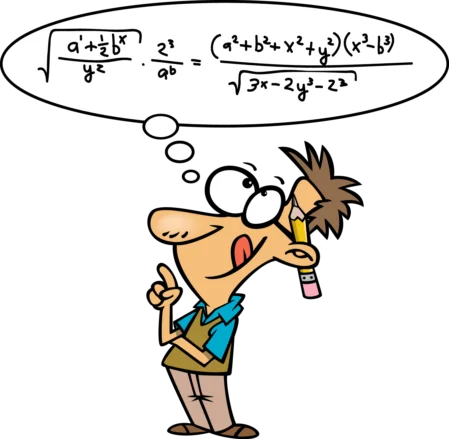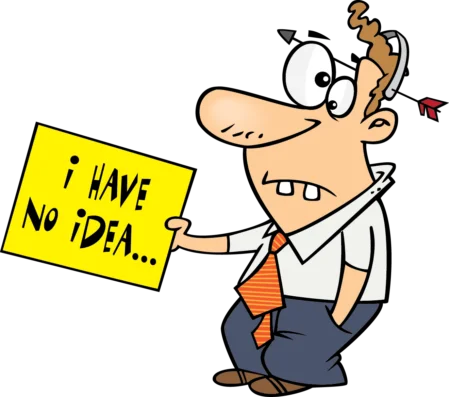Accounting Equation
Accounting Equation

Accounting Equations
Your chef, namely me, is about to divulge a secret recipe. I know you've been waiting to get the Colonel's secret recipe for Kentucky fried chicken. Sorry to disappoint you, but this recipe is actually a simple equation and lays the foundation on which double entry bookkeeping is built.
This equation is called the ACCOUNTING EQUATION and is also referred to as the Balance Sheet Equation.
The equation may be expressed in three forms:
1. Abbreviated or Simple Version:
Property = Property Rights
2. Expanded Version:
Assets = Liabilities + Owner’s Equity (Capital)
3. Fully Expanded Version:
Assets = Liabilities + Beginning Owner’s Equity (Capital) + Additional Owner Investments + Revenues – Expenses – Draws
Double Entry Bookkeeping System
Do you also recall that term double entry that we mentioned also in an earlier lesson ? Double Entry is a type of accounting/bookkeeping system that requires every transaction to be recorded in at least two places (accounts) using debits and credits (discussed later) to represent increases and decreases.
Well this equation is what double entry is all about. We make two entries for every business transaction. These entries represent increases or decreases in property (assets) and/or property rights (liabilities and owner’s equity).
In other words the double entry system based on the Accounting Equation allows us to track:
(1) What We Got and What Went (Property)
Assets The “Good Stuff”
and
(2) From Whom and To Whom (Property Rights)
Claims To The Assets (“Good Stuff”)
Who has a right or claim to the business’s property ? Claims to the property (assets) arise from two sources:
Creditors of the business (liabilities)
Those from whom the business borrows from or buys from on credit are called creditors. The creditors have a claim to the property (assets) of the business until they are paid. These creditor claims are called liabilities. Two common types of creditors are a business’s suppliers and bankers.
Owner(s) of the business (owner’s equity)
Yes the owner(s) also has a claim to the property (assets) for property (assets) invested into their business and any increases or decreases resulting from operating the business.
Remember we previously discussed Owner’s Equity (“Ma Capital”) and also her four kids Revenue, Investment, Expense, and Draws. If you recall, we learned that revenues and additional owner investments increase owner’s equity while expenses and draws decrease owner’s equity.
Another way to think about these increases and decreases to equity is to relate it to your personal financial situation. Your earnings (revenue) increase your personal wealth (equity) and your living expenses and draws (money you give your wife) decrease your personal wealth (equity). Sorry gals that I picked on you for my example of draws.
Besides monitoring and keeping up with the activity of her four “Kids”, “Ma Capital” also has the responsibility of summarizing the activity of her four kids (revenue, expense, investment, and draws) for a period of time (monthly or yearly).
Think of Owner’s Equity (Capital) as Ma’s Purse. Ma summarizes all the increases and decreases resulting from revenues, expenses, investments, and draws and puts the balance in her purse (capital). This summarizing activity is called Closing the Books . Closing The Books will be discussed more in a later lesson.
It should now be apparent that the assets (property) are subject to two kinds of claims (property rights), those arising from the rights (claims) of creditors (liabilities) and those arising from the rights (claims) of the owner (owner’s equity).

Developing Our Different Versions
Of the Accounting Equation
and No, you don't need an extensive knowledge of mathematics to understand !
Since
(1) Property = Assets and
(2) Property Rights (Claims to the Property) = Liabilities + Owner’s Equity (Capital),
the simple or abbreviated accounting equation Property = Property Rights expanded or restated now becomes
Assets = Liabilities + Owner’s Equity (Capital).
We’re now going to concentrate on the Owner’s Equity (Capital) section of the equation. If you recall, the balance of Owner’s Equity (“Ma Capital”) is affected by her kids Revenue, Expense, Investment, and Draws.
Businesses normally operate with the objective of making a profit. Profit is determined by using two of “Ma Capital’s Kids” (Revenue and Expense) and subtracting the expenses from revenue (income). Any profits made by a business go to the owner. Therefore, the effects of revenue (income) and expenses are shown under the Owner’s Equity section of the accounting equation.
An increase in revenues represents an increase in profit and therefore an increase in Owner’s Equity (“Ma Capital”). An increase in expenses represents a decrease in profits and therefore a decrease in Owner’s Equity (“Ma Capital”).
“Kid Draws” and “Kid Investment” also affect the Owner’s Equity (“Ma Capital”) section of the accounting equation. Draws decrease Owner’s Equity (“Ma Capital”) and additional investments increase Owner’s Equity (“Ma Capital”).
Summary of The Effects of “Ma’s Kids” on Owner’s Equity (“Ma Capital”):
Owner Investments (“Kid Investment”) increase Owner’s Equity (“Ma Capital”)
Revenues (“Kid Revenue”) increase Owner’s Equity (“Ma Capital”)
Expenses (“Kid Expense”) decrease Owner’s Equity (“Ma Capital”)
Owner’s Draws (“Kid Draws”) decrease Owner’s Equity (“Ma Capital”)
Using the above information we can present this information in the following equation:
Current Owner’s Equity (Capital) = Beginning Owner’s Equity (Capital) + Owner’s Investments + Revenues – Expenses -Draws
This new Owner’s Equity Equation illustrates the relationships and effects investments, revenue, expense, and draws have on Owner’s Equity (Capital) .
Let’s take this one final step to arrive at our Fully Expanded Accounting Equation which includes all the components that make up and affect Owner’s Equity (Capital).
Our Expanded Accounting Equation, Assets = Liabilities + Owner’s Equity (Capital) expanded or restated now becomes our Fully Expanded Version
Assets = Liabilities + Beginning Owner’s Equity (Capital) + Additional Owner Investments + Revenues – Expenses – Draws.
In the Expanded Version of the Accounting Equation, “Ma Capital’s Kids” are hiding behind her skirt. They’re there; you just don’t see them. The fully expanded version brings them out of hiding and shows you their effects on Owner’s Equity (“Ma Capital”).
While all three of the equations illustrate the relationship of property and property rights, the accounting equation most often used and referred to is the Expanded Equation or Basic Equation:
Assets = Liabilities + Owner’s Equity
Observation: In using the expanded accounting equation, if two of the three components are known, the third can easily be calculated by using some simple Algebra to rearrange the equation. Don’t worry, you’re not going to get an Algebra Lesson.
The accounting equation can be expressed in the following different ways:
Asset emphasis:
Assets = Liabilities + Owner’s Equity
Equity emphasis:
Owner’s Equity = Assets – Liabilities
Liability emphasis:
Liabilities = Assets – Owner’s Equity
So, You Can:
- Calculate Assets if Liabilities and Owner’s Equity are known
Assets = Liabilities + Owner’s Equity (Normal Formula)
- Calculate Owner’s Equity if Assets and Liabilities are known
Owner’s Equity = Assets – Liabilities
- Calculate Liabilities if Assets and Owner’s Equity are known
Liabilities = Assets – Owner’s Equity
Let’s see if I fibbed.
If Liabilities are 70,000 and Owner’s Equity is 30,000 what is the value of the Assets ?
Assets = Liabilities + Owner’s Equity
Assets = 70,000 + 30,000
Assets= 100,000
If Assets are 100,000 and Liabilities are 70,000 what is the value of our Owner’s Equity ?
Owner’s Equity = Assets – Liabilities
Owner’s Equity = 100,000 – 70,000
Owner’s Equity = 30,000
And lastly, if Assets are 100,000 and Owner’s Equity is 30,000 what is the value of our
Liabilities ?.
Liabilities = Assets – Owner’s Equity
Liabilities = 100,000 – 30,000
Liabilities = 70,000
- Property & Property Rights

